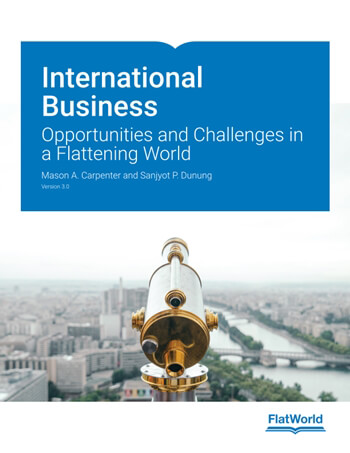International Business Opportunities and Challenges in a Flattening World Version 3 0 3rd Carpenter Test Bank
$35.00 Original price was: $35.00.$26.50Current price is: $26.50.
International Business Opportunities and Challenges in a Flattening World Version 3 0 3rd Carpenter Test Bank
Instant download International Business Opportunities and Challenges in a Flattening World Version 3 0 3rd Carpenter Test Bank pdf docx epub after payment.

Product details:
- ISBN-10 : 145338684X
- ISBN-13 : 978-1453386842
- Author: Carpenter
When purchased from FlatWorld (the publisher), this Color Print Textbook includes Online Access, Quizzes, Flashcards and Homework (if professor uses Homework system). Online textbook is accessible. This textbook not only provides the foundation for the subject, but also helps today’s learners understand what is really relevant in today’s constantly changing global business arena. The authors stress the importances of seeing borders as bridges, and not barriers, as they encourage entrepreneurship and discuss strategy.
Table of contents:
Chapter 1: Introduction
1.1 What Is International Business?
1.2 Who Is Interested in International Business?
1.3 What Forms Do International Businesses Take?
1.4 The Globalization Debate
1.5 Ethics and International Business
1.6 End-of-Chapter Questions and Exercises
Chapter 2: International Trade and Foreign Direct Investment
2.1 What Is International Trade Theory?
2.2 Political and Legal Factors That Impact International Trade
2.3 Foreign Direct Investment
2.4 Tips in Your Entrepreneurial Toolkit
2.5 End-of-Chapter Questions and Exercises
Chapter 3: Culture and Business
3.1 What Is Culture, Anyhow? Values, Customs, and Language
3.2 What Are the Key Methods Used to Describe Cultures?
3.3 Understanding How Culture Impacts Local Business Practices
3.4 Global Business Ethics
3.5 Tips in Your Entrepreneurial Toolkit
3.6 End-of-Chapter Questions and Exercises
3.7 Additional References
Chapter 4: World Economies
4.1 Classifying World Economies
4.2 Understanding the Developed World
4.3 Developing World
4.4 Emerging Markets
4.5 Tips in Your Entrepreneurial Toolkit
4.6 End-of-Chapter Questions and Exercises
Chapter 5: Global and Regional Economic Cooperation and Integration
5.1 International Economic Cooperation among Nations
5.2 Regional Economic Integration
5.3 The United Nations and the Impact on Trade
5.4 End-of-Chapter Questions and Exercises
Chapter 6: International Monetary System
6.1 What Is the International Monetary System?
6.2 What Is the Role of the IMF and the World Bank?
6.3 Understanding How International Monetary Policy, the IMF, and the World Bank Impact Business Practices
6.4 Tips in Your Entrepreneurial Toolkit
6.5 End-of-Chapter Questions and Exercises
Chapter 7: Foreign Exchange and the Global Capital Markets
7.1 What Do We Mean by Currency and Foreign Exchange?
7.2 Understanding International Capital Markets
7.3 Venture Capital and the Global Capital Markets
7.4 Tips in Your Entrepreneurial Toolkit
7.5 End-of-Chapter Questions and Exercises
Chapter 8: International Expansion and Global Market Opportunity Assessment
8.1 Global Strategic Choices
8.2 PESTEL, Globalization, and Importing
8.3 International-Expansion Entry Modes
8.4 CAGE Analysis
8.5 Scenario Planning and Analysis
8.6 End-of-Chapter Questions and Exercises
Chapter 9: Exporting, Importing, and Global Sourcing
9.1 What Are Importing and Exporting?
9.2 Countertrade
9.3 Global Sourcing and Its Role in Business
9.4 Managing Export and Import
9.5 What Options Do Companies Have for Export and Import Financing?
9.6 Tips in Your Entrepreneurial Toolkit
9.7 End-of-Chapter Questions and Exercises
Chapter 10: Strategy and International Business
10.1 Business and Corporate Strategy
10.2 Generic Strategies
10.3 International Strategy
10.4 The Five Elements of Strategy
10.5 Managing the International Business with the P-O-L-C Framework
10.6 End-of-Chapter Questions and Exercises
Chapter 11: Global Entrepreneurship and Intrapreneurship
11.1 Entrepreneurship
11.2 What Do Entrepreneurs Do?
11.3 Business Entrepreneurship across Borders
11.4 From Entrepreneurship to Born-Global Firms
11.5 From Entrepreneurship to Intrapreneurship
11.6 End-of-Chapter Questions and Exercises
Chapter 12: Winning through Effective, Global Talent Management
12.1 The Changing Role of Strategic Human Resources Management in International Business
12.2 The Global War for Talent
12.3 Effective Selection and Placement Strategies
12.4 The Roles of Pay Structure and Pay for Performance
12.5 Tying It All Together—Using the HRM Balanced Scorecard to Gauge and Manage Human Capital, Including Your Own
12.6 Tips in Your Entrepreneurial Toolkit
12.7 End-of-Chapter Questions and Exercises
Chapter 13: Harnessing the Engine of Global Innovation
13.1 An Introduction to Research and Development (R&D)
13.2 Intellectual Property Rights around the Globe
13.3 How to Organize and Where to Locate Research and Development Activities
13.4 Increasing Speed and Effectiveness of International Innovation
13.5 Innovation for the Bottom of the Pyramid
13.6 End-of-Chapter Questions and Exercises
Chapter 14: Competing Effectively through Global Marketing, Distribution, and Supply-Chain Management
14.1 Fundamentals of Global Marketing
14.2 Critical Decision Points in Global Marketing
14.3 Standardized or Customized Products
14.4 Global Sourcing and Distribution
14.5 Global Production and Supply-Chain Management
14.6 End-of-Chapter Questions and Exercises
Chapter 15: Understanding the Roles of Finance and Accounting in Global Competitive Advantage
15.1 International Accounting Standards
15.2 Accounting in International Business
15.3 Fundamentals of Finance
15.4 Financial Management in International Business
15.5 Global Money Management: Moving Money across Borders
15.6 End-of-Chapter Questions and Exercises
People also search:
international business opportunities and challenges in a flattening world pdf
international business opportunities and challenges in a flattening world
international business opportunities and challenges in a flattening world 3rd edition
examples of international business opportunities
what is international business all about
what jobs can you get with international business
Related products
Test Bank
Test Bank for Operating Systems: Internals and Design Principles, 7th Edition: William Stallings











